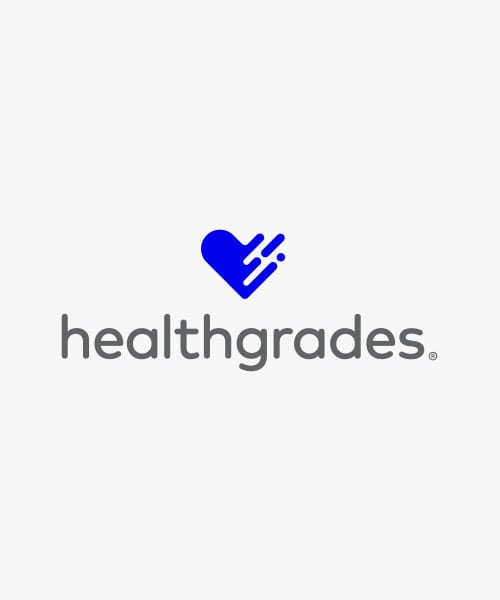Every year, Healthgrades recognizes hospitals that demonstrate excellence in patient safety with the Healthgrades Patient Safety Ratings and the Patient Safety Excellence Award™. This year’s ratings and awards release coincides with Patient Safety Awareness Week (March 13-19), a time for hospitals and care teams to review existing safety measures, celebrate successes, and identify areas for improvement. With March 2022 marking the two-year anniversary of the COVID-19 pandemic in the United States, this is a perfect opportunity to look at how the global health crisis has affected your hospital’s safety protocols and to establish a safety infrastructure built to endure.
In addition to better outcomes, a hospital’s patient safety performance is key as patients are taking a more active role in making decisions about their own health care, taking into consideration factors such as quality, patient experience, and safety. There are shifting patient expectations: 78% of healthcare consumers are willing to shop around for care and there continues to be declining consumer loyalty to hospitals and health systems. As you evaluate your own hospital’s patient safety efforts, Healthgrades has identified four specific areas of performance highly correlated to achieving strong patient safety results that you’ll want to consider.
How Healthgrades Measures Patient Safety
Patient safety ratings are based on the rate at which serious, potentially preventable complications and adverse events occurred in the hospital. To determine patient safety ratings and award recipients, Healthgrades evaluated 14 AHRQ-defined patient safety indicators that span the continuum of care, from iatrogenic pneumothorax to postoperative sepsis. Patient safety indicators (PSIs) are administrative data-based measures that identify potentially preventable in-hospital patient safety events. Healthgrades estimates that there were 170,231 potentially preventable patient safety events among Medicare patients in US hospitals between 2018 and 2020*.
To be eligible for a Patient Safety Excellence Award, a hospital must meet high clinical quality thresholds, collect data on at least seven core PSIs, and have zero Foreign Object Left During Surgery or Procedure safety incidents.
If you want to learn more about how Healthgrades calculates patient safety, check out our full methodology. Otherwise, keep reading to find out how Healthgrades can help your care team cultivate a resilient safety culture.
Prioritize the Core Four
Each PSI represents a critical area of focus for patient safety, but it’s important to prioritize improvement efforts, especially as many health systems are juggling staff workforce challenges and addressing care backlogs. Consider focusing on the following four PSIs that accounted for almost 74% of all patient safety events between 2018 and 2020*:
- In-hospital fall resulting in hip fracture
- Collapsed lung resulting from procedure or surgery in or around chest
- Catheter-related bloodstream infections acquired in-hospital
- Pressure sores or bed sores acquired in-hospital
Healthgrades data indicates a significant correlation between high performance in these four key PSIs and receiving the 2022 Healthgrades Patient Safety Excellence Award.
Focusing on existing safety measures in these areas can help your hospital stand out and improve both your performance and ratings. Plus, when you invest in patient safety, you’ll be saving in more ways than one: an analysis by Frost & Sullivan estimates that adverse patient safety events such as in-hospital-acquired infection, sepsis, medication safety, pressure ulcers, and diagnostic errors in the United States and Western Europe will create a cost-burden of $383.7 billion1.
Patient Safety During COVID-19
As hospitals contend with staff shortages, supply chain disruptions, and unprecedented infection surges, patient safety standards are deteriorating. In some instances, pre-pandemic progress was actually reversed. For example: in the five years preceding COVID-19, central-line-associated bloodstream infections in U.S. hospitals had decreased by 31%. By the second quarter of 2020, these infections were up 28%. The CDC reports similar increases for catheter-associated urinary tract infections and ventilator-associated events2.
These concerning developments underscore the importance of focusing and reporting on PSIs to create a culture of safety at your hospital. For additional insight, Healthgrades spoke with leaders from two Patient Safety Excellence Award-receiving hospitals to find out how their care teams have responded to patient safety challenges throughout the pandemic.
Q: How did your hospital continue to maintain a laser focus on key Patient Safety Indicators (PSIs), and continue to be successful in delivering on patient expectations of safety and care?

Donna Lawson, Vice President of Quality and Patient Safety, Atlantic Health System: Patient safety is the cornerstone of everything that we do. Throughout the COVID-19 pandemic, our medical staff and clinical team members leveraged our safety behaviors to ensure exceptional quality, safety and positive outcomes for all who enter our system of care. This achievement is a testament to the unwavering commitment from the teams at Chilton, Newton and Overlook Medical Centers, whose seamless collaboration and expertise translate to patients receiving the highest level of care.

Harsha Upadhyay, Regional CEO (TX, AL, GA), Prime Healthcare: These awards are a true testament to the commitment shown by our physicians and staff during this time who remain dedicated and steadfast to do their best every day. Prime Healthcare has established a culture of high reliability with patient safety at its core, across the entire health system. Multiple COVID surges and ongoing staffing shortages have challenged us in unexpected ways, yet Prime Healthcare remains committed to providing the best care to our patients. We are honored to receive the Healthgrades Patient Safety awards again for 2022.
Moving Forward
In spite of the extensive impact that COVID-19 has had on the nation’s hospitals, there have been successes along the way. Healthgrades recently celebrated 24 hospitals that provided exceptional care while treating the greatest number of patients during the first wave of the pandemic. We commend these hospitals for their continued dedication to clinical excellence and look to the future to congratulate the 2022 Patient Safety Excellence Award recipients.
Footnotes:




